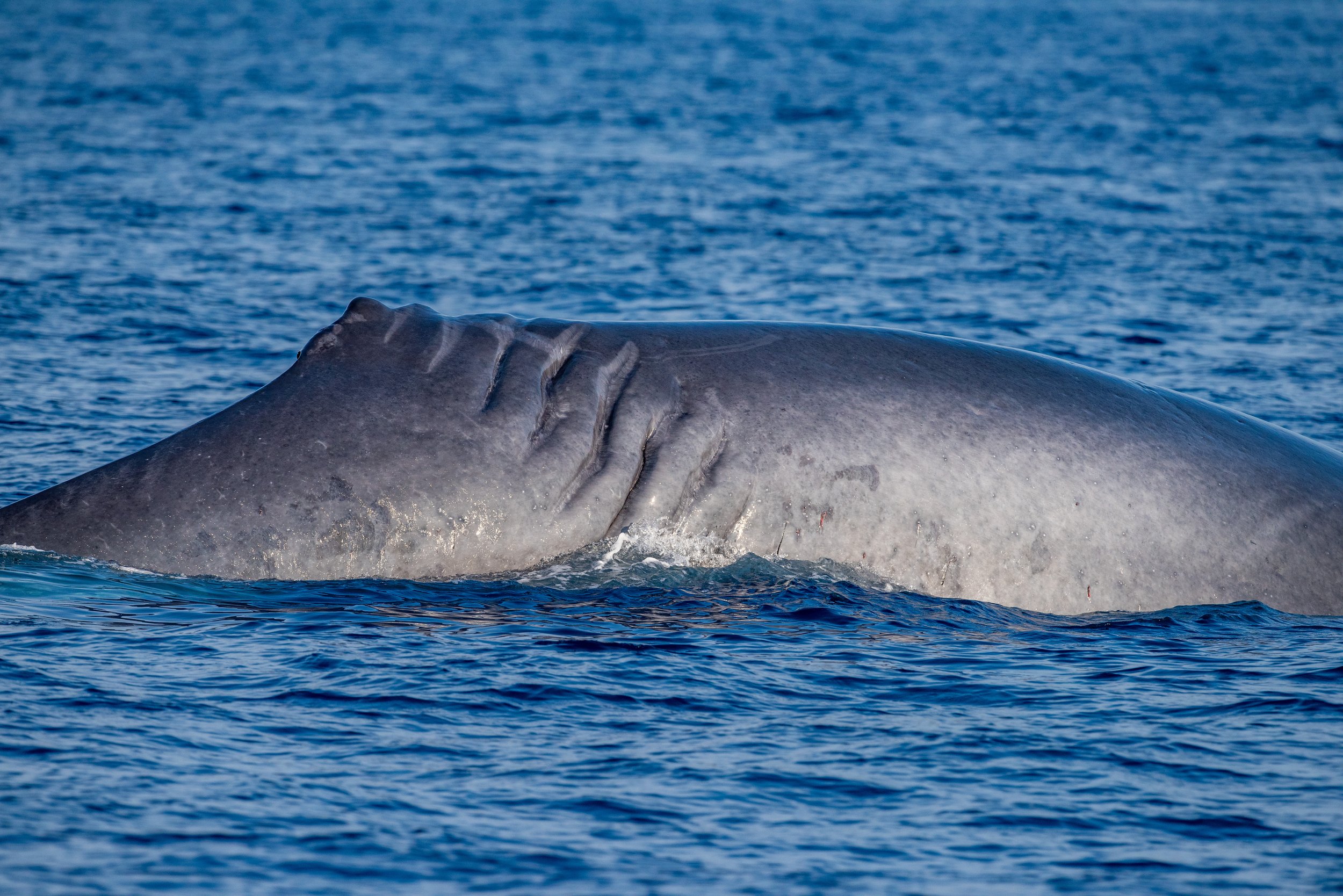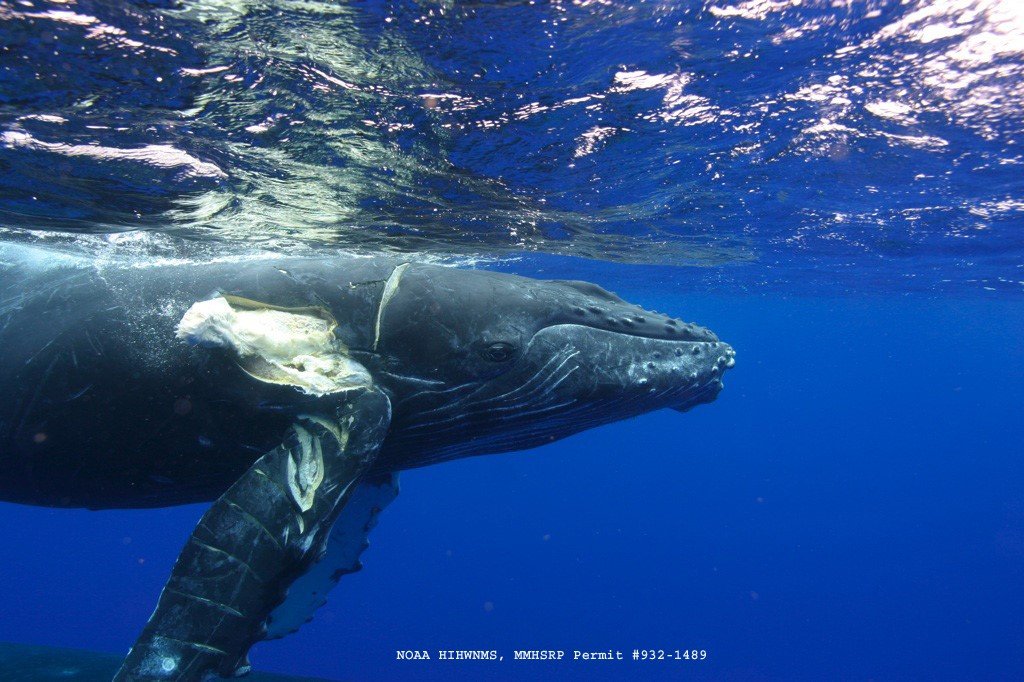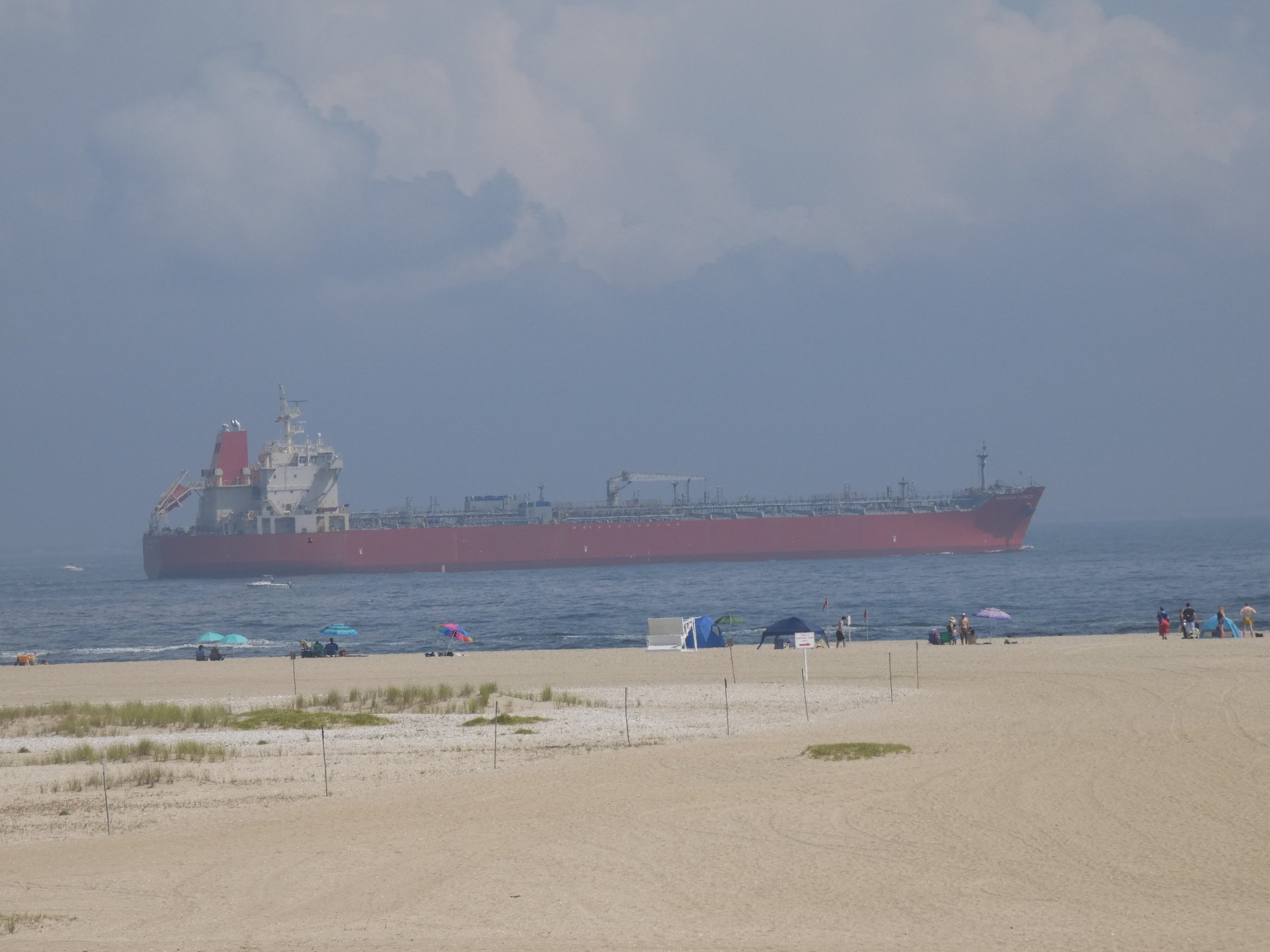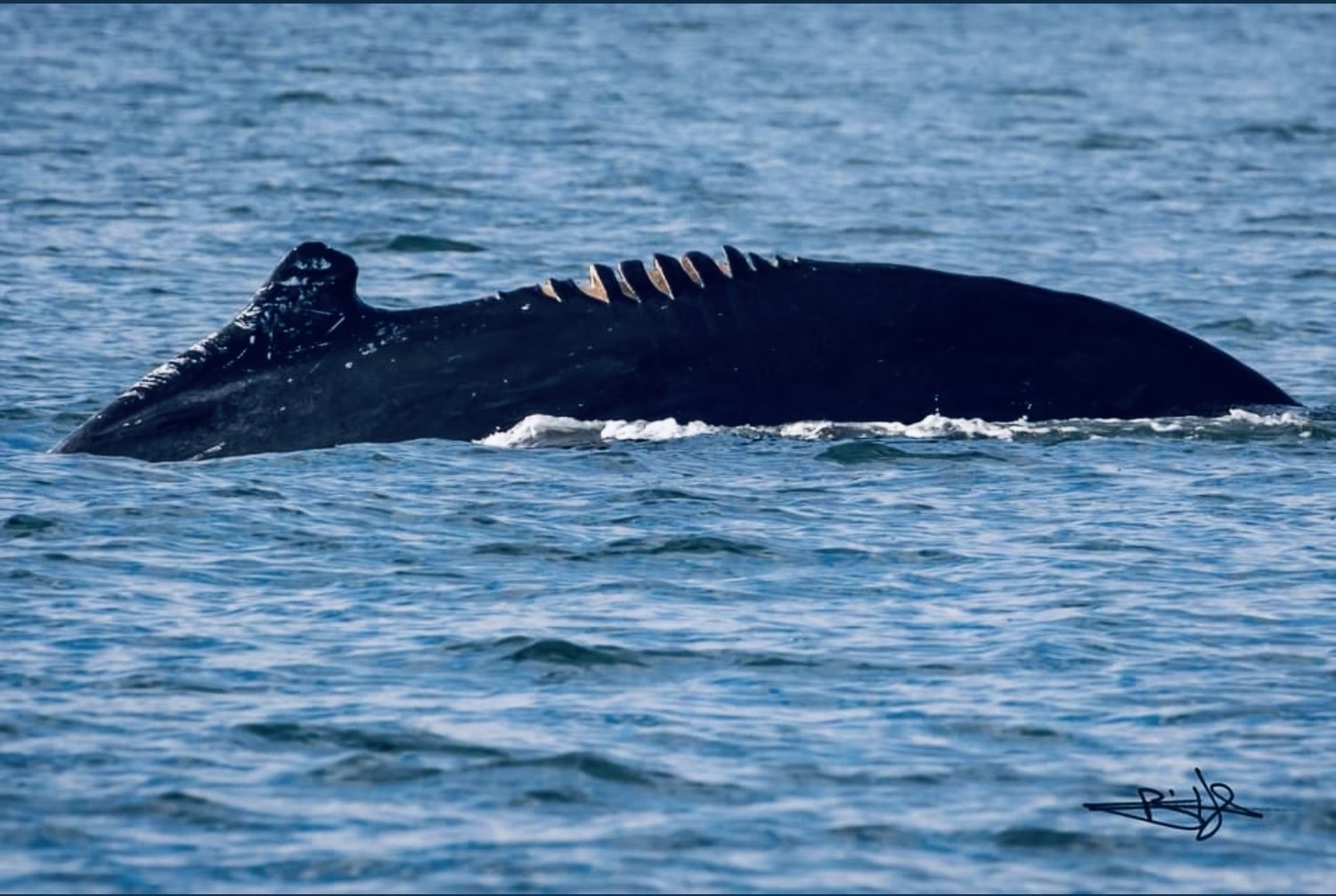SHIP STRIKES ARE KILLING WHALES!
A juvenile humpback whale washed up dead along Monmouth Beach, NJ in 2009 soon after being struck by a cargo ship in the Atlantic Ocean. The white blob located outside the mouth of the whale is its stomach. The impact of the ship strike was so powerful that it forced the stomach of the whale to move forward OUTSIDE OF its mouth.
SHIP STRIKES ARE THE NUMBER 1 KILLER OF WHALES ALONG THE JERSEY SHORE!
The number of whale sightings and deaths along the Jersey Shore and around New York Harbor have increased dramatically in recent years.
Unfortunately, at the same time as there are more whales, there are increasing amounts of ships around New York Harbor and along the Jersey Shore.
As a result, the NUMBER 1 threat to the safety of whales along the Jersey Shore is GETTING HIT BY A SHIP!
The Atlantic Ocean is not pristine wilderness, but an urban jungle full of speeding ships and tanker traffic.
Over the years, water quality has been improving along the Jersey Shore due to laws put in place from the establishment of the Clean Water Act of 1972, as well as countless people volunteering to cleanup our environment. In return, cleaner waters have brought about increasing amounts of baitfish, especially Atlantic menhaden or bunker (Brevoortia tyrannus). More food in local coastal waters, and greater protection for whales and other marine mammals from the establishment of the federal Marine Mammal Protection Act of 1972, has helped to bring about increasing observations and sightings of whales feeding, migrating and swimming near the coast of New Jersey and New York.
According to a 2022 Rutgers University study, humpback whales are not only returning to New York City waters to feed every year, but are staying for longer period of time. The average stay for a humpback in the New York Bight Apex — the waters from Fire Island to the Manasquan Inlet in New Jersey — is 37.6 days, according to the study. Wildlife biologists and scientists connected with the study used 2011-2018 whale sighting information to analyze the population identity, site fidelity and demographic characteristics of the humpbacks. Most of the visiting humpbacks are less than 5 years old and largely belong to either the Gulf of Maine or Eastern Canadian feeding populations. There were sightings of 101 individual whales during the seven-year study, but that number has risen to 257 total as of 2022. It’s a huge jump from when just five whales were spotted in 2011 by the nonprofit Gotham Whale environmental organization.
The sightings, which are almost always juvenile humpbacks or occasionally finbacks, minke, and North Atlantic right whales, and even sporadically sperm whales, suggest the marine mammal population is growing in the New York Bight, one of the most populated coastlines in the world.
Fin whale damaged in a ship collision with a propeller.
Humpback whales that has been injured from ship propellors. Image from the International Whale Commission.
It’s not completely clear why more whales are lingering longer or are spending longer feeding periods along the Jersey Shore. It is likely they are finding sufficient food resources to sustain themselves for a longer duration. In addition, since most whale sightings are juvenile humpback whales, their presence suggests these adolescent whales do not wish to compete for food with adult whales farther north within foraging area along the coasts of New England and Canada. Evidence over the last several years is showing that global warming right now is making it more difficult to find prey in warmer waters. See articles below for more information on how global warming is impacting sea life around the Gulf of Maine.
An Overheating Gulf of Maine Is Forcing Wildlife to Adapt—or Move
The Gulf Of Maine Is Warming, And Its Whales Are Disappearing
During the 18th and 19th centuries, industrial whaling decimated the world-wide whale population, including causing the extinction of the North Atlantic Grey whale population and the near extinction of the North Atlantic Right Whale. Today, the threats continue to be from people. Along the Jersey Shore, major threats to whales include ship strikes and plastic pollution.
SHIP STRIKES KILL MANY WHALES ALONG THE JERSEY SHORE
It’s like a hit and run death or injury to a human by a car, but in this case it’s happening to whales and other species of coastal wildlife including sea turtles.
Just as whales and other species of marine mammals are returning in record numbers along the Jersey Shore, there is a dramatic increase in ship traffic along the Jersey Shore, because now the Port of New York & New Jersey is the number one port in the United States!
Shipping traffic has increased along coastal United States (even as small as a jet ski), plus increasing speed of watercraft and the expanding sizes of cargo or tanker vessels often means death and injury for many slow moving whales and sea turtles who might be just resting, migrating or seeking a meal along the coast.
WHY ARE THERE SO MANY SHIPS ALONG THE JERSEY SHORE?
There are over 26 million people living in New York City, New Jersey and Long Island (that’s like the entire population of Australia within a small corner of the East Coast). With that many consumers, it is no wonder the Atlantic Ocean is one of the busiest international maritime trade (shipping) routes in the world. There are large ships coming and going all the time.
Furthermore, the Port of New York and New Jersey is ranked as the busiest port in the United States. The port first overtook the Port of Los Angeles as the nation’s busiest port in August 2022 and has maintained its lead ever since. The Port of New York and New Jersey is also the largest port on the East Coast of the United States. Moreover, the Port of Philadelphia is one of the largest shipping areas of the United States. In 2016, 2,427 ships arrived at Delaware River port facilities. Our ocean waters along the Jersey Shore are not a pristine wilderness, but a busy and bustling urban jungle that never sleeps with ship traffic.
Commercial cargo ships and tankers can move very close to the coast where whales sometimes feed. This picture was taken at Sandy Hook, Gateway National Recreation Area, North Beach, at the entrance to New York Harbor during August 2019.
When the U.S West Coast (primarily the Port of Los Angeles and Long Beach) was the number one port in the country, the coastline had many whales that washed ashore which showed evidence of ship strikes. This included Blue, Fin, Humpback, and Gray whales. These species are most vulnerable to vessel strikes because they migrate along the coast and many use areas near the coast for feeding, where they overlap with heavy shipping traffic. The combination of high traffic, feeding areas, and migratory whale routes result in a marked increase risk of ship strikes to whales that can result in serious injury or death to whales.
Does the above statement sound similar to the Jersey Shore?
The remans of a juvenile humpback whale found at Sandy Hook on a beach at the entrance to New York Harbor in August 2019. The young whale likely collided with a cargo ship in the Atlantic Ocean.
Whale deaths from ship strikes are not just happening in the United States, there has been increasing incidences of ship strikes based on strandings around the world due to increasing global shipping activities.
According to research carried out by non-profit Friends of the Sea, ship strikes kill more than 20,000 whales every year globally. This is nearly 55 whales every day.
On beaches around the New York Bight, there have been more than 62 reported mortalities of humpback whales between 2016 and early 2023, with many showing sign of death from a ship strike. Additionally, between 2017 and 2023 in New York and New Jersey, ship strikes killed or injured over 15 North Atlantic right whales.
Around 45% of whale sightings recorded by Gotham Whale were less than 3 kilometers (1.8 miles) from shore. Analysis of automatic identification system data from passing vessel traffic also showed that in 2016, 95% of sightings were within 100 meters (328 feet) of at least one vessel in transit.
Ship traffic has increased more than 34 percent in the last 5 years. It doubles every ten years, putting under pressure the entire ecosystem where whales travel and feed. Worse still, modern vessels have augmented (sped up) their speed, making it more difficult to avoid a strike if, by chance, ships can spot a whale in their path, which doesn’t happen often.
Ship Strikes Are Putting Great Stress on Whales
Ships strikes are putting great stress on our marine mammal population along the Jersey Shore. This in turn is shrinking populations of whale species by reducing their breeding rate, thus slowing the rate of population replacement. This is particularly true for the North Atlantic right whale, which feeds and migrates along the Jersey Shore and is one of the most endangered whale species in the world. The latest preliminary estimate suggests there are fewer than 350 individual North Atlantic right whales in the world and out of this number only around 70 are reproductive females. If nothing is done to protect North Atlantic right whales, they will likely disappear and go extinct.
The bulbous bow or front section of a fast moving boat’s hull is like a battering ram, easily smashing the bones and internal organs of a sleeping or tired whale, a slow moving sea turtle or an unsuspecting sea creature.
A juvenile humpback whale seen around New York Harbor in 2021 with cuts and scars from a propeller wound from a large ship. Picture from Gotham Whale.









